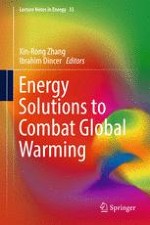2017 | OriginalPaper | Chapter
13. The Feasibility Study on Blast Furnace Low Temperature Heat Source Refrigeration for Dehumidified Blast
Authors : Zongwei Han, Fengyuan Zhang, Jing Zhao, Weiliang Li
Published in: Energy Solutions to Combat Global Warming
Publisher: Springer International Publishing
Activate our intelligent search to find suitable subject content or patents.
Select sections of text to find matching patents with Artificial Intelligence. powered by
Select sections of text to find additional relevant content using AI-assisted search. powered by
